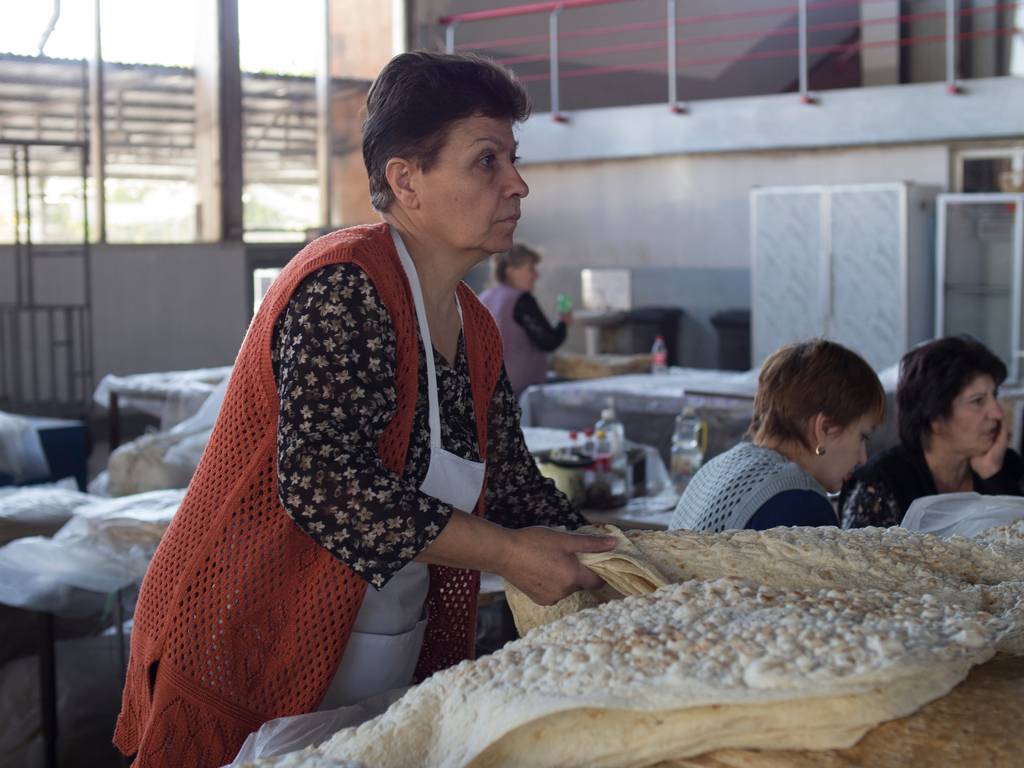Supporting the comprehensive and more results-oriented approach, “Enlight” Public Research Center NGO forms cooperation with StrategEast within the framework of their new project: “Bulleting on the main issues on the bilateral agenda of the EU and the Eastern Partnership countries.” The Bulletin is designed as a useful tool for public institutes and decision-makers whose sphere of interest includes the EaP region and will be distributed among over 1000 senior EU and EaP officials, international institutions, and distinguished experts.
In mid-September, the European Commission published its annual report on the EU4Business initiative, covering all EU support to SMEs in the six Eastern Partnership countries. The 2021 report provides detailed information on EU assistance across the program’s three priority areas: access to finance, business development services and the business-enabling environment. In 2020, the EU provided support to nearly 72,000 SMEs, a third of which are owned by women. This has resulted in over 50,000 new jobs and €1 billion in extra income generated by EU-supported SMEs in Armenia, Azerbaijan, Belarus, Georgia, Moldova and Ukraine.
StrategEast has interviewed leading EaP experts to hear their thoughts on factors for SMEs’ growth in their countries. Here are the answers from an Armenian expert.
For each country, as well as for Armenia, the sustainable development of small and medium-sized businesses has been and continues to be a priority, as it is a unique source of satisfying consumer demand, increasing economic activity and applying innovative incentives. One definite proof of this is the fact that during more than 3 decades of its existence, the independent Republic of Armenia has had two national security strategies (2007 and 2020), which targeted goals such as providing a favorable environment for attracting entrepreneurship and investment and improving tax administration.
In 2018, the number of companies established per 1,000 inhabitants in Armenia was 9.8. According to the WB report, this figure reaches 30 in high-middle-income countries. At present, the index of the Republic of Armenia corresponds to the index of low-middle-income countries. During its session on August 27, 2020, the Government of the Republic of Armenia approved the Small and Medium-sized Business Development Strategy for 2020-2024 and its associated action plan for 2020-2022 developed by the RA Ministry of Economy. The measures defined by the strategy are expected to promote the growth of SME productivity, increasing it by 3% in 2020-2023, and by 7.5% in 2024. In particular, the value added produced by one employee in SMEs in 2024 will make 12 million AMD, which is almost twice the same indicator of 2018 (in 2018 the indicator was 6.7 million AMD). Only by evaluating the performance indicators can one understand to what extent the mentioned results are realistic, and whether it is possible to record such results in the present unfavorable conditions.
We strongly believe that the improvement of the environment conducive to business development should be considered a primary condition for SME development in Armenia, and the other factors are directly derived from it. That is, only a stable business environment is able to attract investments, ensure the availability of financial resources for businesses. A stable business environment is directly related to the existence of an appropriate legal field, the provision of necessary promotion mechanisms and the development of target strategies. In this regard, we consider it necessary to mention that the introduction of the concept of public-private partnership in the Republic of Armenia, the law on which was first adopted in the country in 2019 and amended in 2021, can become a unique stimulus for the development of the business environment. In addition, the Public Investment Management Concept has been adopted, which assumes the classification of investment programs according to priorities. In other words, these conceptual mechanisms create an opportunity to implement large-scale investment projects with the direct cooperation of the state and the private sector, and the assessment of economic priorities, which can become serious incentives for a country with a small market like the Republic of Armenia. Taking into account the fact that the above-mentioned concepts are still in the field of application, we believe that their effective application can be a precondition for the implementation of large investment projects, creating a basis for the activation of the SME sector.
Author Narine Petrosyan, analyst of the “Enlight” Public Research Center NGO
Original source: Strategeast









